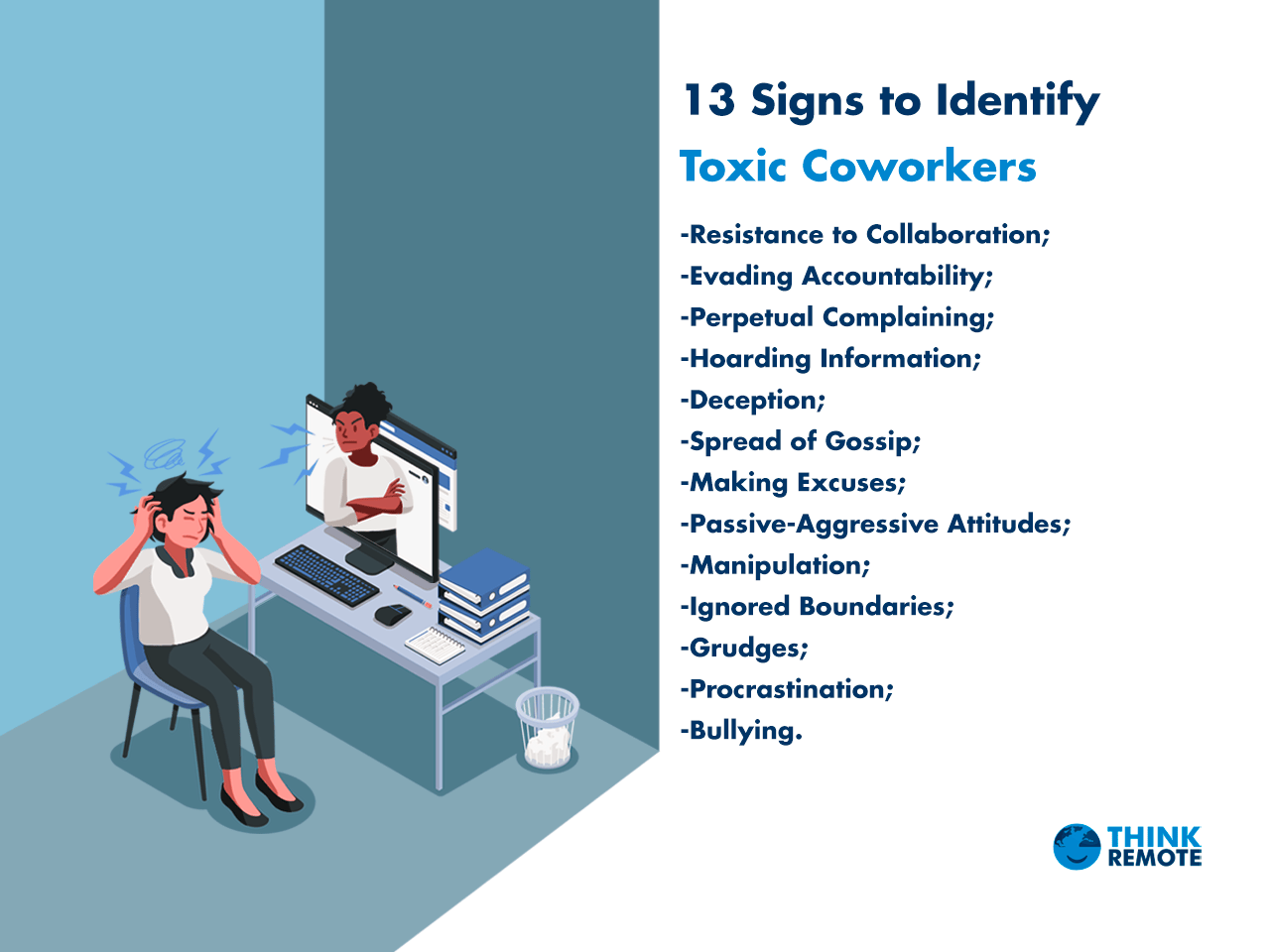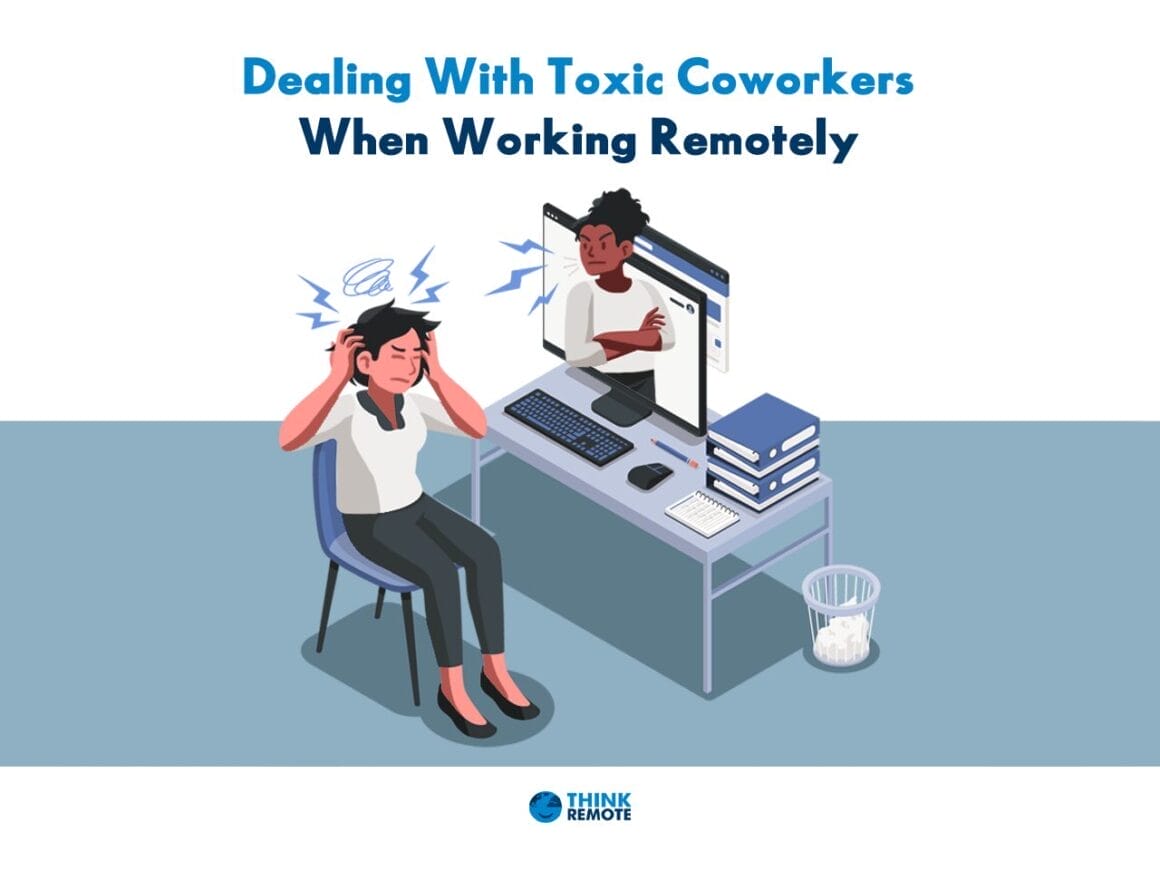I’m sure most of us are familiar with a rollercoaster ride that is remote work. For me, it was like a breath of fresh air, finally escaping the clutches of office politics and those toxic coworkers who always seemed to suck the life out of every interaction. But here’s the kicker – distance doesn’t always make the heart grow fonder, especially when it comes to toxic coworkers.
Take a scenario where you are cozied up in your home office, ready to kick the day. Then suddenly, you receive a stream of spam emails from your colleague who seems to be unpleasant by how well you have been performing. Or, your inbox is flooded by that one nosy coworker who always has something to say about other colleagues. Such are examples of toxic workers in remote work setups.
Unfortunately, while most remote workers report enjoying the freedom of working from home, they also admit that the workplace politics in such setups are more challenging to handle, with 84% confessing that such issues are dragged on for several days or even weeks.
So, how do you deal with toxicity when working from home? This article has everything you should know.

13 Signs to Identify Toxic Coworkers
Identifying the signs of toxic coworkers in a remote setup can be challenging. The reason is that remote work sometimes cloaks negative attitudes, otherwise evident in an office setting. So, you must be vigilant and pay attention to how your colleagues respond from the other end.
Here are some signs to watch out for:

- Resistance to Collaboration: A strong team player is vital in any work environment. Beware of individuals who repeatedly dodge teamwork.
- Evading Accountability: If they constantly fail to take responsibility for their actions.
- Perpetual Complaining: Is there a voice always dissenting, never satisfied, regardless of circumstances?
- Hoarding Information: Success hinges on information flow. A hoarder of knowledge can derail shared goals.
- Deception: False narratives about work and projects undermine mutual trust. Spread of Gossip: Idle talk breeds a harmful culture.
- Making Excuses: Regularly skirting blame is a red flag.
- Passive-Aggressive Attitudes: These underhanded tactics corrode professional relationships. Manipulation: Attempts to control situations for personal advantage disrupt harmony.
- Ignored Boundaries: Professional limits must be respected. Grudges: Dwelling on past slights signals an inability to progress.
- Procrastination: Delays in responsibilities can strain the collective effort.
- Bullying: Aggressive behavior has no place in a healthy workplace. The damage from toxic behaviors can ripple through the workforce, impeding productivity and potentially sabotaging the company’s success.
10 Types of Toxic Coworkers
Now that you understand the signs to look out for, you must understand the various types of toxic coworkers in remote workspaces and how to deal with them.
1. The Gossiper
Gossipers are always eager to share the latest rumors. But engaging with office gossip is akin to stepping into quicksand – the more you struggle, the deeper you sink, considering that a conversation with a gossiper may turn into a headline in hours.
Additionally, the chances are, if someone is gossiping about another colleague to you, they will also do the same about you to others. So, while it’s okay to confide in a coworker about something fishy or bothering you, it’s something else if the conversation takes a sensational approach. Something like spreading another person’s health status, marital issues or daily struggles can cause mental damage both to you and the victim.
Solution: The best way to handle gossipers is to remain professional and not entertain gossip. But be kind in how you approach them; for instance, if the gossip is about another colleague, you can say something like, “I’ve always found them to be different but a valuable member of the team.”
2. The Know-It-All
As the name suggests, these groups act like they know more than others and use that to step on their colleagues. They have opinions about everything and everyone, and mostly, the opinions are negative or unasked for.
Solution: In most cases, the Know-It-All tries to quench their thirst for validation. So, you can tone them down by giving them the acknowledgment they are so desperately seeking. A simple “That’s an interesting point” can go a long way. Follow it up with your evidence-based contributions to slowly shift the dialogue to a more balanced place where everyone is heard.
3. The Glory Hunter
Take a scenario where you have spent weeks or even months on a project, only for a colleague to step into the limelight at the eleventh hour and try to act as if they helped you do most of the work. The Glory Hunter thrives in such scenarios and aims to leave industrious coworkers in the shadows, dismayed and credit less.
Solution: You can dismiss such toxic colleagues by documenting your contributions meticulously. Keep your leadership in the loop and understand that reasonable self-promotion is not bragging—it’s self-advocacy.
4. The Negative
Negative coworkers see darkness during a sunrise, and it’s contagious. They are pessimistic and always spreading their gloominess. Consequently, they discourage optimistic individuals and make moving forward almost impossible.
Solution: The trick to shut them down is to counter their negative opinions with positivity when possible to encourage a shift in perspective.
5. The Toxically Positive
This group swerves away from concerns with relentless cheer. While they mean well, their glossy outlook often muffles necessary criticism and stifles pivotal discussions.
Solution: These only need balanced communication that assigns weight to all manner of feedback. Encourage a workspace where people can freely discuss problems without fear of being dismissed by a one-dimensional interpretation of positivity.
6. The Do-Nothing
The classic evaders of workload emerge unscathed because of their charismatic personality.
Solution: Addressing the inequity in workload directly with management can realign team responsibilities to those who will uphold their end. In a realm as teamwork-oriented as ours, accountability is sacred.
7. The Downputter
They’re quick to dismiss ideas and delight in subtle jabs that eat away your confidence like a slow-acting venom.
Solution: You can protect yourself by recognizing the fine line between critique and condescension. Assert the value of your ideas confidently and ask for specific feedback that can help foster constructive dialogue.
8. Always Asking for Favors
These frequently ask for help, which could be work-related or help with personal stuff. While their demands sprout from a genuine place of necessity, they can easily be burdening.
Solution: The only way to save yourself is to draw clear boundaries. Although there is joy in being compassionate, don’t do it at the cost of drowning in someone else’s obligations. Stand firm in your contribution without sacrificing your deadlines on the altar of politeness.
9. Flirtation or Inappropriate Behavior
Some colleagues have no problem crossing other people’s boundaries with inappropriate behavior. You can navigate such a nuisance by ceasing unwelcome flirtations with conviction. Certain circumstances necessitate clear and honest communication, stating the inappropriateness of their conduct to the offender.
Solution: In more severe cases, a direct conduit to upper management or HR becomes necessary, ready to course-correct to preserve a respectful work environment.
10. The Backstabber
These are probably the hardest group to evade. They seem all nice, friendly and bubbly, but deep down, they wish for your downfall. They may even offer real help they you need it, but you will later pay for it in one way or the other.
For example, imagine a coworker who seems to always have your back. They provide you with valuable insights and even volunteer to take on extra tasks. However, as the project progresses, you notice fishy behaviors. Each time you propose a new idea that could improve the project, the colleague undermines you and is quick to point out flaws. They intentionally discredit you but act like they are doing it from a point of love.
Solution: Be cautious of people you don’t talk to, who suddenly act extra nice to you. Don’t immediately let your guard down, but instead, take time to study them.
Protecting Yourself from Toxic Coworkers
Identifying toxic behaviors is critical to safeguarding not only personal well-being but also the collective efficacy of your team. You can start by having candid conversations with the toxic colleagues, laying the groundwork for understanding and potential transformation. If that doesn’t work, be composed, and don’t change your ground.
In some situations, you may be forced to involve your superiors. A proactive stance demonstrates your commitment to collective prosperity and mental peace.
Finally, self-care plays a vital role in protecting yourself against toxic environments. Take a balanced diet, exercise regularly, and get ample rest.
How Do You Address Non-Collaborative Coworkers
Non-collaborative colleagues will drag you behind. But you need to understand that, at times, their resistance may signal underlying distrust or fear of delegation gone awry. In such cases, try to build conversations with them so that they can trust you. Or, seek managerial intervention—a team manager can develop strategies that foster inclusive and cooperative alliances.
Final Thoughts
The landscape of remote work isn’t immune to the strain of toxicity. So, remain vigilant to spot any of the mentioned signs or types of toxic coworkers. Then, develop survival mechanisms to protect yourself from their toxicity.






